Who is who in cardiovascular research? What a review of Nobel Prize nominations reveals about scientific trends
- PMID: 33675420
- PMCID: PMC8639567
- DOI: 10.1007/s00392-021-01813-2
Who is who in cardiovascular research? What a review of Nobel Prize nominations reveals about scientific trends
Abstract
Background: Since 1901, at least 15 scholars who contributed to cardiovascular research have received a Nobel prize in physiology or medicine.
Methods: Using the Nobel nomination database (nobelprize.org), which contains 5950 nominations in the accessible period from 1901 to 1953 in physiology or medicine, we listed all international nominees who contributed to cardiovascular research. We subsequently collected nomination letters and jury reports of the prime candidates from the archive of the Nobel Committee in Sweden to identify shortlisted candidates.
Results: The five most frequently nominated researchers with cardiovascular connections from 1901 to 1953 were, in descending order, the surgeon René Leriche (1879-1955) (FR) with a total of 79 nominations, the physiologist and 1924 Nobel laureate Willem Einthoven (1860-1927) (NL) (31 nominations), the surgeon Alfred Blalock (1899-1964) (US) (29 nominations), the pharmacologist and 1936 Nobel laureate Otto Loewi (1873-1961) (DE, AT, US) (27 nominations) and the paediatric cardiologist Helen Taussig (1898-1986) (US) (24 nominations). The research of these scholars merely hints at the width of topics brought up by nominators ranging from the physiological and pathological basics to the diagnosis and (surgical) interventions of diseases such as heart malformation or hypertension.
Conclusion: We argue that an analysis of Nobel Prize nominations can reconstruct important scientific trends within cardiovascular research during the first half of the twentieth century.
Keywords: Cardiac surgery; Cardiology; Excellence in cardiovascular research; Helen B. Taussig; Nobel Prize.
© 2021. The Author(s).
Conflict of interest statement
The authors declare that they have no conflict of interest.
Figures
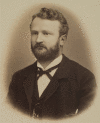
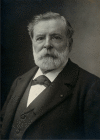
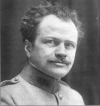

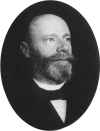

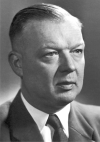


Similar articles
-
The "Nobel Population" in Pharmacology: Nobel Prize laureates, nominees and nominators 1901-1953 with a focus on B. Naunyn and O. Schmiedeberg.Naunyn Schmiedebergs Arch Pharmacol. 2020 Jul;393(7):1173-1185. doi: 10.1007/s00210-019-01807-y. Epub 2020 Jan 18. Naunyn Schmiedebergs Arch Pharmacol. 2020. PMID: 31953675
-
Why did Alfred Blalock and Helen Taussig not receive the nobel prize?J Card Surg. 2015 Jun;30(6):506-9. doi: 10.1111/jocs.12552. Epub 2015 Apr 30. J Card Surg. 2015. PMID: 25931156
-
Babinski, Bektherev, Cerletti, Head, and Hitzig: European Neurologists Nominated for the Nobel Prize 1901-1950.Eur Neurol. 2020;83(5):542-549. doi: 10.1159/000509078. Epub 2020 Jul 30. Eur Neurol. 2020. PMID: 32731244
-
Excellence in orthopaedic surgery: an overview of Nobel Prize nominees 1901-1960 with focus on Friedrich Pauwels and Gerhard Küntscher.Int Orthop. 2018 Dec;42(12):2957-2960. doi: 10.1007/s00264-018-4081-x. Epub 2018 Aug 10. Int Orthop. 2018. PMID: 30097726 Review.
-
Nobel prizes: contributions to cardiology.Arq Bras Cardiol. 2015 Aug;105(2):188-96. doi: 10.5935/abc.20150041. Epub 2015 May 5. Arq Bras Cardiol. 2015. PMID: 25945466 Free PMC article. Review.
Cited by
-
Excellence in dental research: nominated scholars for the Nobel Prize 1901-1950 with a focus on Lady May Mellanby (1882-1978) and Walter Hess (1885-1980).Br Dent J. 2022 Jun;232(11):825-829. doi: 10.1038/s41415-022-3996-1. Epub 2022 Jun 10. Br Dent J. 2022. PMID: 35689067 Free PMC article.
-
[Franz Büchner's wartime hypoxia research and the Nobel Prize].Pathologie (Heidelb). 2023 Feb;44(1):63-69. doi: 10.1007/s00292-022-01086-0. Epub 2022 Jun 9. Pathologie (Heidelb). 2023. PMID: 35925307 Free PMC article. German.
-
Why so few Nobel Prizes for cancer researchers? An analysis of Nobel Prize nominations for German physicians with a focus on Ernst von Leyden and Karl Heinrich Bauer.J Cancer Res Clin Oncol. 2021 Sep;147(9):2547-2553. doi: 10.1007/s00432-021-03671-x. Epub 2021 May 29. J Cancer Res Clin Oncol. 2021. PMID: 34052879 Free PMC article.
References
-
- Hansson N, Halling T, Fangerau H, editors. Attributing excellence in medicine: the history of the Nobel Prize. Netherlands: Brill; 2019.
-
- Hansson N, Jones DS, Schlich T. Defining ‘cutting-edge’ excellence: awarding nobel prizes (or not) to surgeons. In: Hansson N, Halling T, Fangerau H, editors. Attributing excellence in medicine. The history of the nobel prize. Netherlands: Brill; 2019. pp. 122–139.
Publication types
MeSH terms
LinkOut - more resources
Full Text Sources
Other Literature Sources

